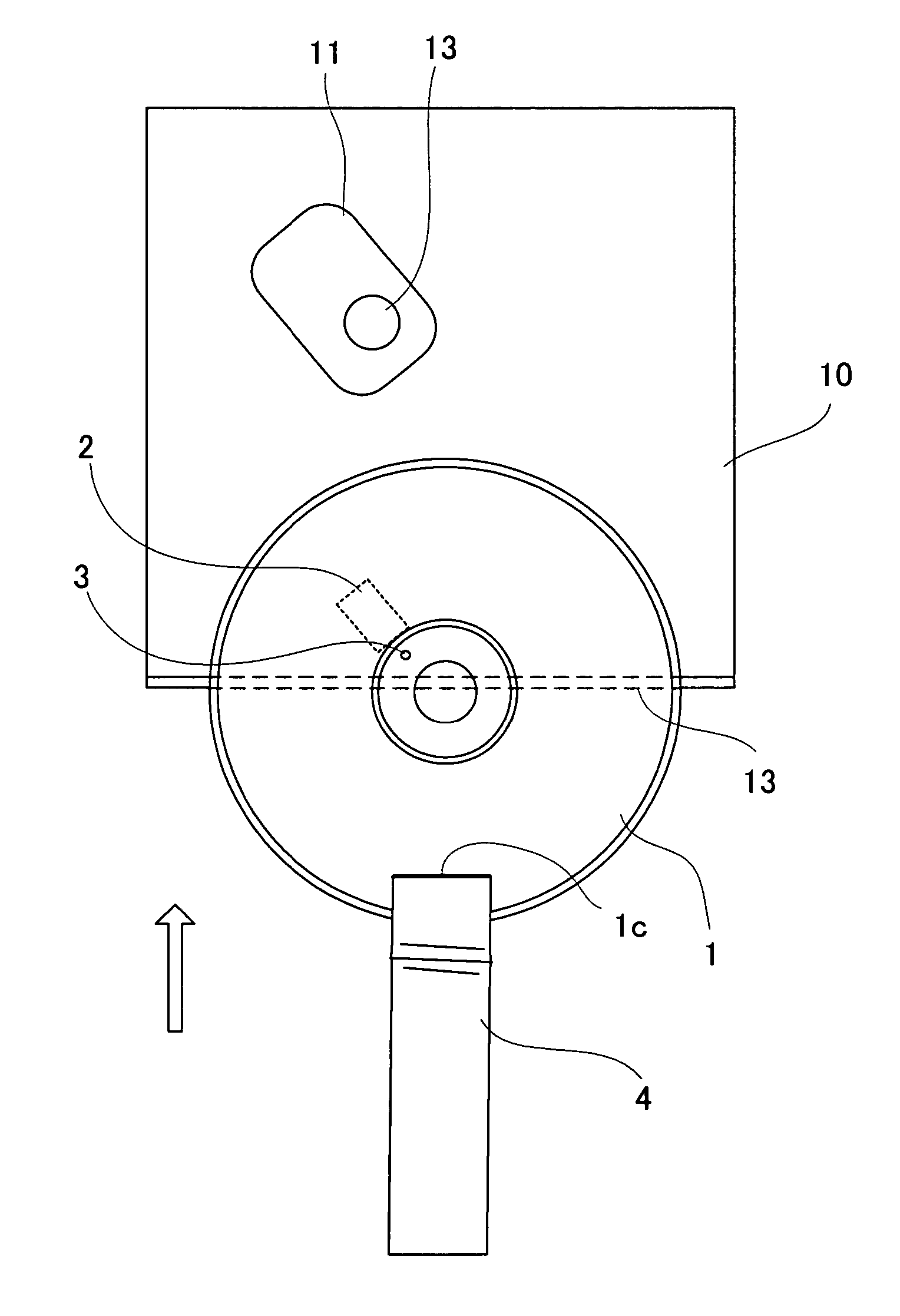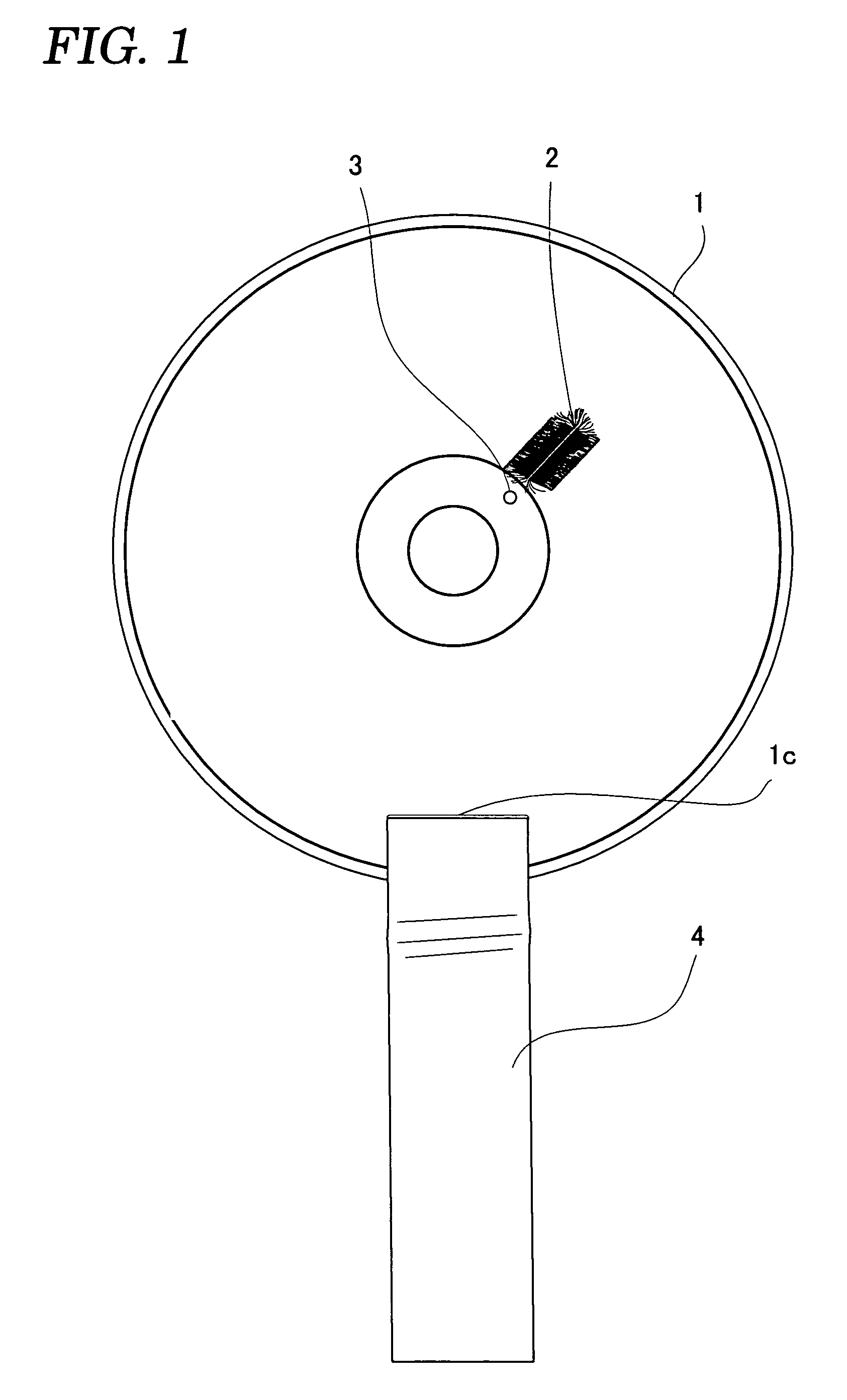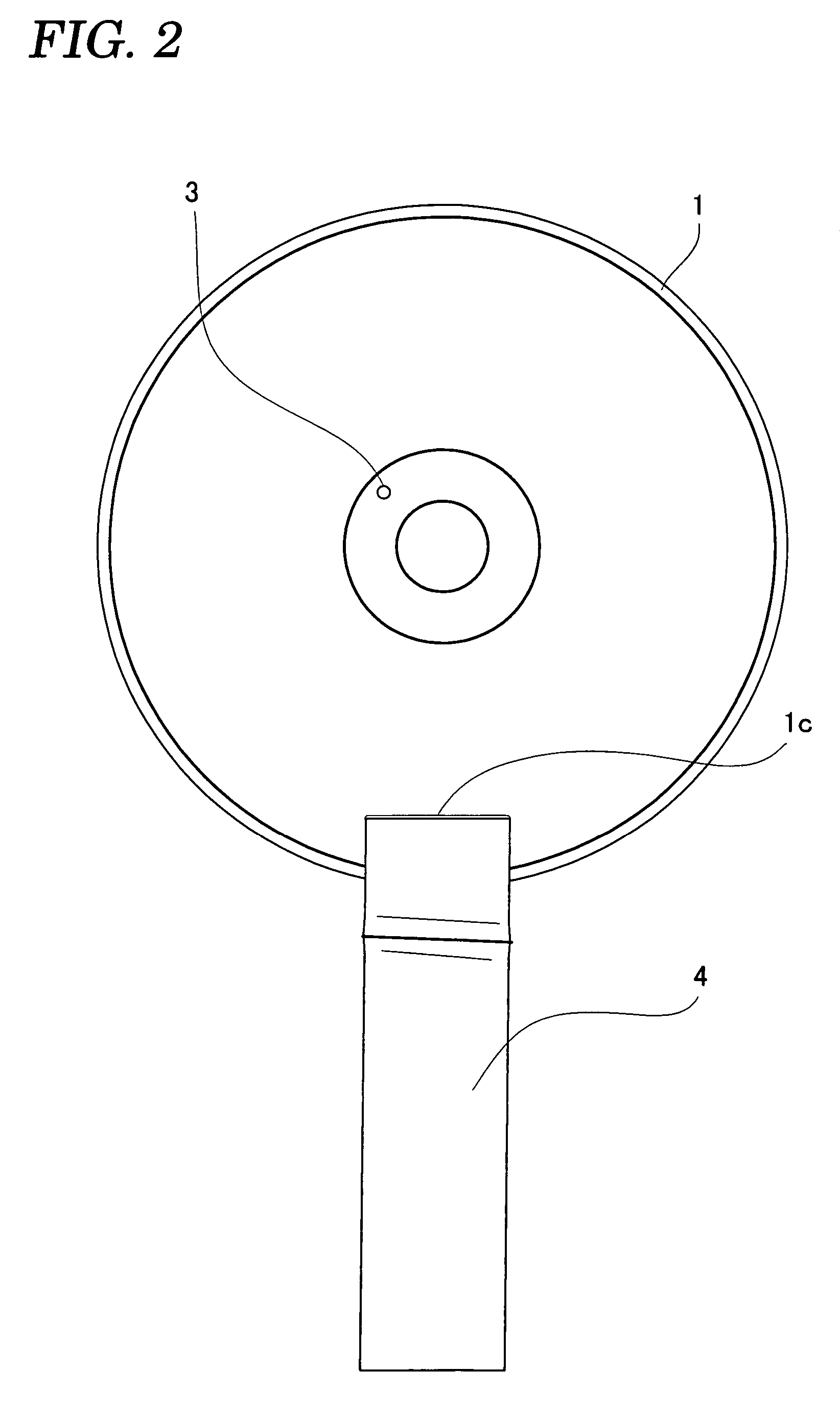Lens cleaner and lens cleaning method for optical disc device
a technology of optical discs and cleaners, which is applied in the direction of mechanical recording, instruments, flat record carriers, etc., can solve the problems of affecting the sound quality, and affecting the quality of reproduction signals, so as to achieve simple and reliable effects
- Summary
- Abstract
- Description
- Claims
- Application Information
AI Technical Summary
Benefits of technology
Problems solved by technology
Method used
Image
Examples
Embodiment Construction
[0036]Below, an embodiment of the present invention is described in concrete terms with reference to FIG. 1 to FIG. 6.
1. Constitution of the Lens Cleaner
[0037]FIG. 1 and FIG. 2 are plan views showing a lens cleaner relating to one embodiment in which the present invention is applied, FIG. 1 illustrates a cleaning face and FIG. 2 illustrates a label display face. As shown in FIG. 1, the lens cleaner relating to the present embodiment uses a disc 1 which is of substantially the same specification as a CD, and a cleaning face is constituted by installing bristle brushes 2, which are cleaning members, on the face corresponding to the signal reading face of the CD. An operating ribbon 4 for operating the disc is installed in a portion of the disc 1 in the vicinity of the edge thereof. Below the constitution of each portion of the disc is described in more detail.
[0038]Firstly, as shown in FIG. 1 and FIG. 3, a bristle brush 2 is constituted by providing groove holes 1a, 1b formed in two p...
PUM
| Property | Measurement | Unit |
|---|---|---|
| reflection | aaaaa | aaaaa |
| flexible | aaaaa | aaaaa |
| size | aaaaa | aaaaa |
Abstract
Description
Claims
Application Information
 Login to View More
Login to View More - R&D
- Intellectual Property
- Life Sciences
- Materials
- Tech Scout
- Unparalleled Data Quality
- Higher Quality Content
- 60% Fewer Hallucinations
Browse by: Latest US Patents, China's latest patents, Technical Efficacy Thesaurus, Application Domain, Technology Topic, Popular Technical Reports.
© 2025 PatSnap. All rights reserved.Legal|Privacy policy|Modern Slavery Act Transparency Statement|Sitemap|About US| Contact US: help@patsnap.com



